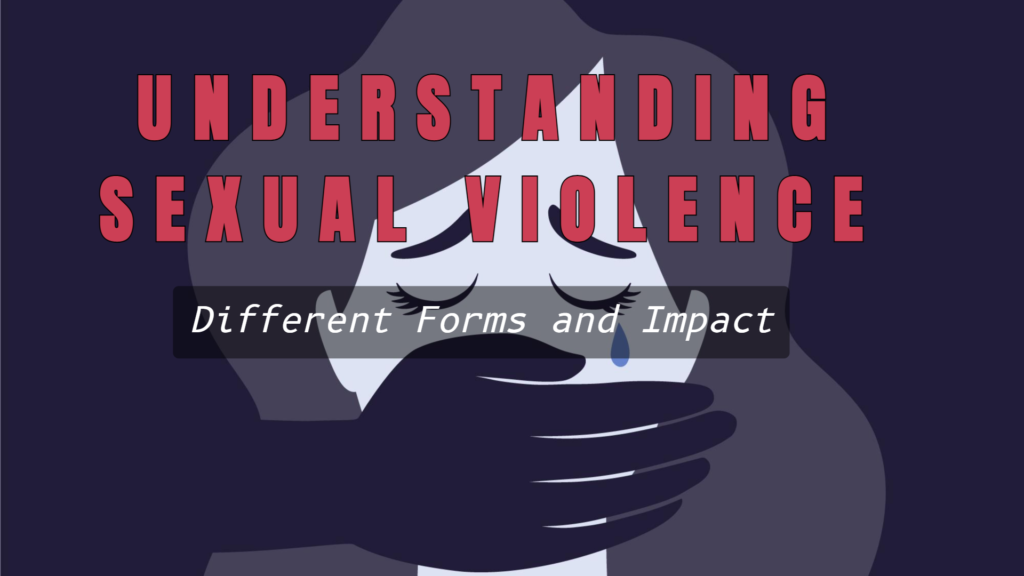According to the World Health Organization (WHO), sexual violence is defined as any sexual act, attempt to obtain a sexual act, unwanted sexual comments/advances, or acts of trafficking directed against a person’s sexuality, using coercion, threats of harm, or physical force, by any person regardless of the relationship to the victim in any setting, including but not limited to home and work
Sexual violence is a significant problem that affects people of all genders, ages, and backgrounds. It is a widespread issue that affects millions of people worldwide. According to the World Health Organisation (WHO), sexual violence is defined as “any sexual act, attempt to obtain a sexual act, unwanted sexual comments/ advances and acts to traffic, or otherwise directed against a person’s sexuality, using coercion, threats of harm, or physical force, by any person regardless of relationship to the victim in any setting, including but not limited to home and work.” (WHO, 2003)
The impact of sexual violence is vast and can have long-lasting physical and psychological effects on survivors. PTSD, depression, anxiety, and difficulty forming healthy relationships are some of the common consequences of sexual violence. It can also contribute to the spread of sexually transmitted infections (STIs) and unwanted pregnancies.
While sexual violence mostly affects women and girls, boys are also subject to child sexual abuse. Adult men, especially those in police custody or prisons, are also be subject to sexual violence. Sexual minorities, especially the transgender community, are also at higher risk of sexual violence. Perpetrators of sexual violence range from strangers to state agencies to intimate partners, and evidence shows that perpetrators are usually persons known to the survivor.
Sexual assault is a form of sexual violence that is often used interchangeably with rape. However, sexual assault can include anything from touching another person’s body in a sexual way without their consent to forced sexual intercourse, oral and anal sexual acts, child molestation, fondling, and attempted rape. The forms of sexual violence are many, and they include:
- Coerced/forced sex in marriage or live-in relationships or dating relationships.
- Rape by strangers.
- Systematic rape during armed conflict, sexual slavery.
- Unwanted sexual advances or sexual harassment.
- Sexual abuse of children.
- Sexual abuse of people with mental and physical disabilities.
- Forced prostitution and trafficking for the purpose of sexual exploitation.
- Child and forced marriage.
- Denial of the right to use contraception or to adopt other measures to protect against STIs.
- Forced abortion and forced sterilization.
- Female genital cutting.
- Inspections for virginity.
- Forced exposure to pornography.
- Forcibly disrobing and parading naked any person.
Sexual violence is a severe violation of human rights that has devastating physical, emotional, and psychological consequences for survivors. It is a public health issue that requires a comprehensive response from governments, civil society, and individuals. It is everyone’s responsibility to speak out against sexual violence, support survivors, and work towards creating a world where sexual violence is not tolerated. We must all work together to end sexual violence and create a safer and more just society for all.
Preventing sexual violence requires a multifaceted approach that involves everyone in society. It is crucial to listen to survivors, provide them with the necessary support, and work together to create a culture that does not tolerate sexual violence in any form.
In conclusion, sexual violence is a complex issue that affects people worldwide. We need to work together to prevent sexual violence, hold perpetrators accountable, and create a society where everyone feels safe and respected.
